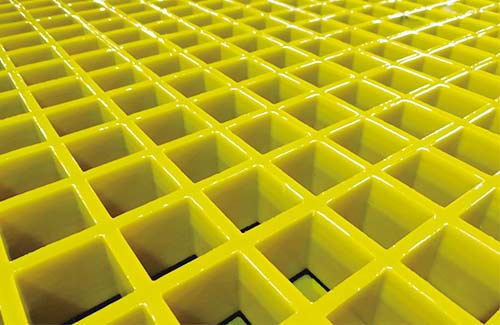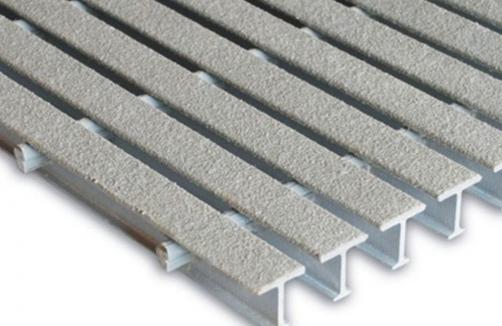Caillebotis légers en PRFV : Le guide ultime pour les applications industrielles
Vous recherchez une solution durable, légère et rentable pour vos besoins en matière de revêtement de sol industriel ? Le caillebotis en plastique renforcé de fibre de verre (PRFV) est peut-être la solution que vous recherchez. Dans ce guide complet, nous allons explorer les avantages, les applications et les considérations liées à l'utilisation de caillebotis légers en PRFV dans les environnements industriels.
Qu'est-ce qu'un caillebotis en PRFV ?

Le caillebotis FRP, également connu sous le nom de caillebotis en fibre de verre, est un matériau composite composé d'un tissu en fibre de verre et d'une matrice polymère. Cette combinaison crée un matériau solide, résistant à la corrosion et incroyablement léger. Contrairement aux caillebotis traditionnels en acier, le caillebotis FRP ne rouille pas, ce qui le rend idéal pour les environnements exposés aux produits chimiques ou à l'humidité.
Pourquoi choisir le caillebotis léger en PRFV ?
Le caillebotis léger en FRP offre plusieurs avantages par rapport aux matériaux conventionnels :
- Résistance à la corrosion: Le caillebotis FRP ne rouille pas et ne se corrode pas, ce qui le rend idéal pour les environnements industriels difficiles.
- Léger: Il est beaucoup plus léger que l'acier, ce qui réduit le temps d'installation et les coûts de main-d'œuvre.
- Haute résistance: Malgré sa légèreté, le caillebotis en PRFV présente un rapport résistance/poids élevé.
- Surface antidérapante: De nombreux caillebotis en PRFV sont dotés d'une surface antidérapante, ce qui renforce la sécurité dans les environnements industriels.
- Rentabilité: Au fil du temps, le caillebotis en PRFV peut être plus économique que l'acier en raison de sa longévité et de ses faibles exigences en matière d'entretien.
Applications industrielles courantes
Le caillebotis FRP est polyvalent et peut être utilisé dans un grand nombre d'applications industrielles. Voici quelques-unes des utilisations les plus courantes :
1. Ponts-plateformes
Les installations industrielles ont souvent besoin de plates-formes pour les postes de travail, les mezzanines et les ponts d'accès. Le caillebotis FRP offre une surface stable et antidérapante qui peut supporter de lourdes charges tout en restant légère.
2. Passerelles et trottoirs
Dans les usines et les entrepôts, les passerelles doivent être durables et faciles à installer. Le caillebotis FRP est un excellent choix en raison de sa résistance aux produits chimiques et de sa légèreté.
3. Chapeaux de cheminée et ventilateurs
Le caillebotis FRP est idéal pour les chapeaux de cheminée et les ventilateurs car il résiste à la corrosion et est suffisamment léger pour ne pas ajouter un poids excessif à la structure.
4. Applications marines
En raison de sa résistance à la corrosion, le caillebotis en PRFV est également couramment utilisé dans les environnements marins, tels que les quais et les jetées.
Éléments à prendre en compte lors du choix d'un caillebotis en PRFV
Bien que les caillebotis en PRFV offrent de nombreux avantages, certains facteurs doivent être pris en compte avant de procéder à l'achat :
- Exigences en matière de charge: Assurez-vous que le caillebotis que vous choisissez peut supporter les charges prévues.
- Longueur de la travée: Le caillebotis FRP est disponible en différentes longueurs de portée, choisissez donc celle qui correspond à vos besoins d'espace.
- Finition de la surface: Déterminez si vous avez besoin d'une surface antidérapante pour des raisons de sécurité.
- Options de couleur: Le caillebotis FRP est disponible en différentes couleurs, ce qui vous permet de choisir celle qui correspond à l'esthétique de votre installation.
Partager, c'est soigner
Si ce guide vous a été utile, n'hésitez pas à le partager avec vos collègues et amis qui souhaiteraient en savoir plus sur le caillebotis allégé en PRFV. N'hésitez pas non plus à laisser un commentaire ci-dessous pour nous faire part de vos questions ou de votre expérience de l'utilisation de caillebotis PRFV dans des applications industrielles.
Conclusion
Le caillebotis léger en PRFV est un excellent choix pour les applications industrielles en raison de sa durabilité, de sa résistance à la corrosion et de sa légèreté. Que vous construisiez une plate-forme, une passerelle ou une structure marine, le caillebotis en PRFV offre une solution rentable et sûre. En tenant compte des facteurs mentionnés dans ce guide, vous pouvez prendre une décision éclairée qui profitera à votre installation industrielle pour les années à venir.
Êtes-vous prêt à améliorer votre sol industriel avec des caillebotis légers en PRFV ? Contactez un fournisseur réputé dès aujourd'hui pour en savoir plus sur les options disponibles et sur la manière dont elles peuvent répondre à vos besoins spécifiques.







